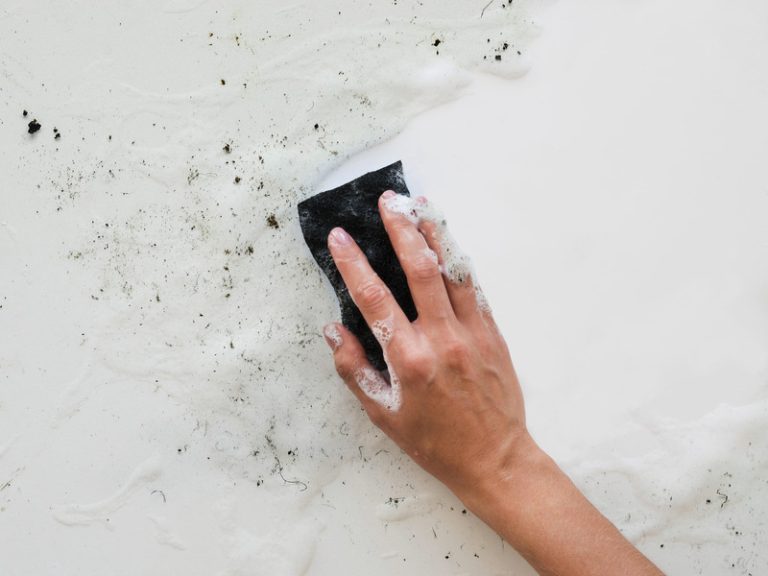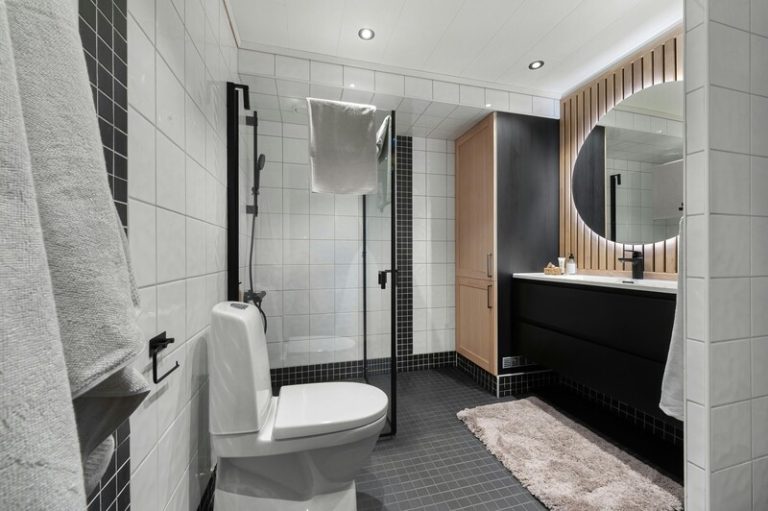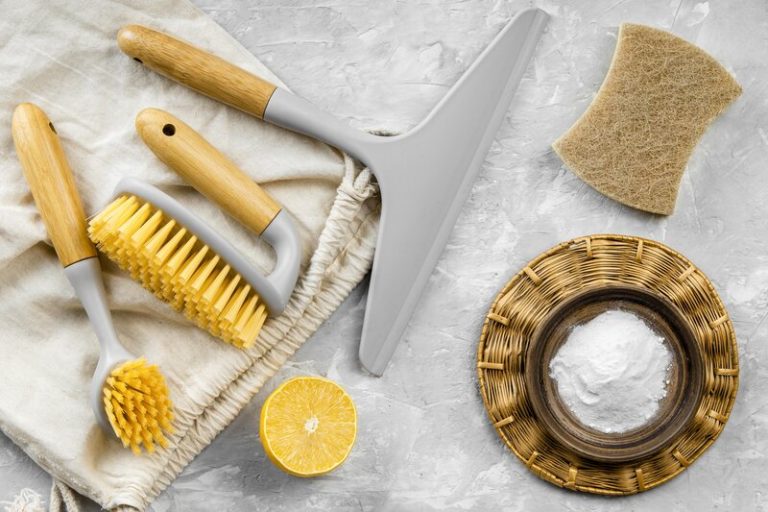Maintaining a spotless store is crucial for customer satisfaction, and having a detailed retail cleaning checklist is essential. This checklist helps ensure that every corner of your retail space is thoroughly cleaned and well-maintained.
A comprehensive retail cleaning checklist covers various tasks, from dusting shelves to sanitizing high-touch areas. By following this guide, you can create a welcoming environment that enhances the shopping experience. Let’s dive in!
What Areas Should Be Included in a Retail Cleaning Checklist?
A comprehensive retail cleaning checklist should cover all areas within the shop, including:
a. Entrance and Front of Store
The entrance and front of the shop are the first areas that customers see, so it is essential to keep entrance walkways clean, vacuum carpets regularly, and disinfect handrails and lift buttons.
Ensuring that the windows are clear of smudges and that any signage is clean and visible is crucial.
Creating a welcoming and well-maintained exterior environment sets the tone for a positive shopping experience.
Proper waste management, such as emptying rubbish bins and removing any litter outside the shop, also contributes to a tidy and inviting entrance.
Regular maintenance of plants and flowers can add a touch of freshness and beauty to the front of the shop, further enhancing its appeal.
By paying attention to these details, businesses can attract and retain customers through a clean and attractive entrance.
b. Sales Floor
On the shop floor, it is essential to ensure that floors are clean, shelves are dusted, and all display areas are regularly disinfected to provide a pleasant shopping experience for customers.
Keeping the shop floor in top condition involves a myriad of tasks – from sweeping and mopping to meticulous dusting of shelves and products.
It’s not just about cleanliness; an organised and tidy shop floor enhances the overall aesthetic appeal and makes it easier for customers to locate products.
Regularly disinfecting surfaces is crucial for maintaining a hygienic environment that instils trust in shoppers.
By ensuring proper upkeep, a shop can create a welcoming atmosphere that encourages customers to linger and explore the offerings.
c. Fitting Rooms
Fitting rooms should be regularly cleaned and disinfected, ensuring that all surfaces and furniture are free of dust and germs.
To effectively maintain the cleanliness of fitting rooms, it is crucial to follow a detailed cleaning routine. Start by wiping down mirrors with a glass cleaner to ensure a clear reflection for customers.
Next, clean chairs with a disinfectant spray or wipes to eliminate any bacteria or stains. Don’t forget to thoroughly sanitize door handles and knobs, as these are high-touch areas.
Additionally, vacuuming floors is essential to remove dirt and debris that accumulate throughout the day. Regularly empty the vacuum bag to prevent odours and maintain a fresh environment. By paying attention to these hygiene practices, you can create a pleasant and clean experience for customers trying on clothes.
d. Restrooms
Toilets require thorough cleaning and regular restocking of soap and paper towels to ensure they remain hygienic and well-maintained for both customers and staff.
Some specific cleaning tasks for toilets include scrubbing toilets, sinks, and floors to remove dirt, grime, and bacteria. By consistently restocking essential supplies like soap and paper towels, you can help prevent the spread of germs and maintain a clean environment.
Scrubbing the toilets not only improves the appearance of the toilet but also eliminates harmful bacteria that can cause illnesses. Similarly, cleaning and disinfecting sinks and floors are crucial steps in preventing the transmission of germs.
e. Break Room and Employee Areas
Break rooms and employee areas should be clean and comfortable for staff, with all surfaces and fixtures regularly wiped down and sanitised.
It is crucial to maintain the cleanliness of these spaces to promote a healthy and productive work environment. A cleaning checklist for break rooms and employee areas should include tasks such as cleaning tables, chairs, and kitchen appliances.
Tables should be wiped with disinfectant to remove any food particles or spills. Chairs must be vacuumed or wiped down to eliminate dust and dirt. Kitchen appliances like fridges, microwaves, and coffee machines should be thoroughly cleaned to prevent the growth of bacteria.
By ensuring these areas are tidy and hygienic, employers can boost employee morale and well-being.
f. Backroom and Storage Areas
Backroom and storage areas should be kept clean and well-maintained to ensure that inventory and equipment are stored in an orderly and safe manner.
The cleanliness of the backroom and storage areas plays a crucial role in the overall efficiency of store operations. Organising shelves helps in easily locating items when needed, reducing the time spent searching for products.
Regular sweeping of floors not only maintains the tidiness of the space but also prevents any potential safety hazards and ensures a pleasant working environment. Proper maintenance of equipment in these areas ensures their longevity and functionality, minimising downtime and avoiding costly repairs.
Some Tips for Creating a Retail Cleaning Checklist
If you’re still unsure, here are some tips that can help you create a retail cleaning checklist:
a. Consider the Size and Layout of Your Store
When creating a retail cleaning checklist, it’s crucial to consider the size and layout of your shop to ensure that all areas are covered and cleaned efficiently. To assess the shop’s size, start by measuring the total square footage.
Break down the layout into different zones, such as the shop floor, storage areas, toilets, and staff restrooms. Each zone may have specific cleaning needs; for example, the shop floor will likely require daily sweeping and mopping, while toilets need frequent disinfection.
Organising your checklist based on these zones can streamline the cleaning process. Create a section for each zone and list specific tasks under each. This way, you can ensure that no area is overlooked and that tasks are prioritised according to their importance.
b. Take Into Account High-Traffic Areas
High-traffic areas, such as entrances and checkouts, require more frequent cleaning to maintain customer satisfaction and ensure a positive shopping experience.
These areas are prone to dirt, spills, and germ accumulation due to the high volume of foot traffic they receive. To effectively manage the cleanliness of these spots, create a cleaning schedule specifically targeting them.
Prioritise tasks like sweeping, mopping, and disinfecting in these zones multiple times a day. Use signage to remind staff and customers to keep these areas clutter-free and report any spills promptly.
Regular inspection and quick response to cleanliness issues in these high-traffic sections can enhance the overall shopping environment and contribute to a positive brand image. By assigning dedicated staff or cleaning teams to tackle these areas, you can ensure that cleanliness is maintained consistently throughout the day.
c. Prioritise Health and Safety Measures
Prioritising health and safety measures in your retail cleaning checklist involves ensuring that all areas are regularly cleaned and disinfected to maintain a hygienic environment for both customers and staff.
Regular disinfection of surfaces and high-touch areas is crucial, especially in retail settings where numerous individuals interact daily.
To achieve optimal cleanliness, it’s essential to carefully select appropriate cleaning products that are effective against a wide range of pathogens. Ensure that the products you choose are suitable for specific surfaces to prevent damage.
Adopting proper cleaning methods, such as following the manufacturer’s instructions and using protective gear, enhances the efficacy of the process.
Consistent disinfection not only safeguards against illness transmission but also creates a welcoming and safe atmosphere for everyone.
d. Involve Employees in the Process
Involving employees in the cleaning process helps distribute tasks effectively and ensures that the entire team is committed to maintaining cleanliness.
By engaging employees in the cleaning process, you not only lighten the load on designated cleaning staff but also foster a sense of responsibility and ownership among the team. This collective effort promotes a positive work environment and boosts morale as everyone plays a role in creating a hygienic and organised space.
Assigning specific cleaning duties to different individuals according to their skills and preferences can further streamline the process and ensure thoroughness in cleanliness standards. Providing proper training and guidance on effective cleaning techniques gives the power to staff to perform tasks efficiently and with attention to detail.
How Often Should a Retail Cleaning Checklist Be Completed?
The frequency of completing a retail cleaning checklist depends on the specific tasks and areas within the shop, with some tasks needing daily attention and others being completed on a weekly or monthly basis.
a. Daily Tasks
Daily tasks should focus on cleaning and disinfecting high-touch areas, vacuuming carpets, and ensuring that the shop is presentable for customers.
By incorporating regular cleaning and disinfecting routines, businesses can create a safe and welcoming environment for both employees and customers. Wiping down counters and mopping floors not only enhances the overall appearance of the shop but also helps prevent the spread of germs and bacteria.
Ensuring that high-touch surfaces like door handles, checkout counters, and toilet facilities are thoroughly sanitised is essential in reducing the risk of illnesses.
Along with the visible cleaning tasks, it’s crucial to pay attention to invisible threats by regularly sanitising common areas and shared equipment. This proactive approach to hygiene not only boosts customer satisfaction but also promotes a healthy work environment for staff members.
b. Weekly Tasks
Weekly tasks should include more detailed floor cleaning, dusting shelves, and wiping down fixtures to ensure that the shop remains clean and well-maintained.
It’s important to regularly clean the floors to remove dirt, grime, and build-up that can accumulate over time.
By thoroughly dusting shelves, you prevent dust from settling and keep the retail space looking fresh.
Wiping down fixtures not only enhances the visual appeal but also ensures that they are free from germs and bacteria, contributing to a healthier environment for both employees and customers.
c. Monthly Tasks
Monthly tasks often require the assistance of professional cleaning services to handle more intensive cleaning jobs, such as maintaining equipment and addressing hard-to-clean areas.
Regarding maintaining a clean and hygienic environment, these tasks go beyond a regular surface cleaning routine. Professional cleaners are equipped with the expertise and tools to perform deep cleaning of equipment, ensuring optimal functionality and longevity.
They excel at meticulously organising storage areas, providing a clutter-free and efficient workspace. Their attention to detail is crucial in identifying and addressing any maintenance issues before they escalate, preventing potential disruptions or safety hazards.
Wrapping up, implementing a retail cleaning checklist is key to keeping your store looking its best and providing a great customer experience. By making cleanliness a priority, you enhance customer satisfaction and loyalty, driving more success for your business.
To maintain these high standards effortlessly, consider enlisting the help of professionals. TEKA Cleaning offers specialised commercial cleaning services tailored to retail spaces, ensuring every aspect of your store is meticulously cleaned and well-maintained. Our experienced team uses advanced techniques and high-quality products to deliver exceptional results that make a lasting impression on your customers.
Don’t let cleanliness fall by the wayside. Contact TEKA Cleaning at 01233 751 544 today to schedule your professional retail cleaning service. Ensure your store remains inviting, hygienic, and attractive, driving customer satisfaction and boosting your business’s success. Act now to keep your store in top shape!
Read also:











